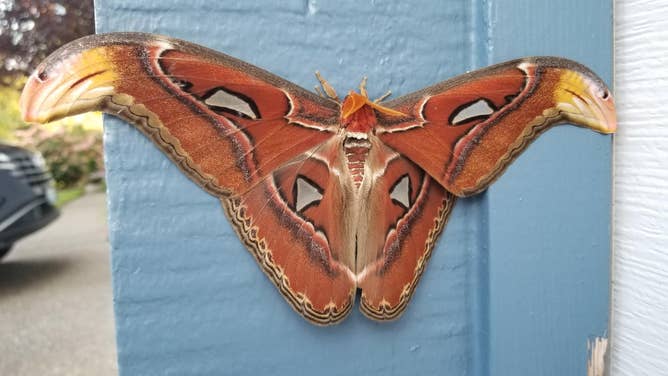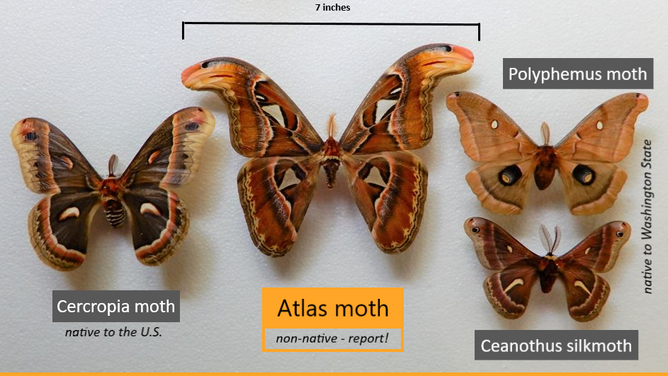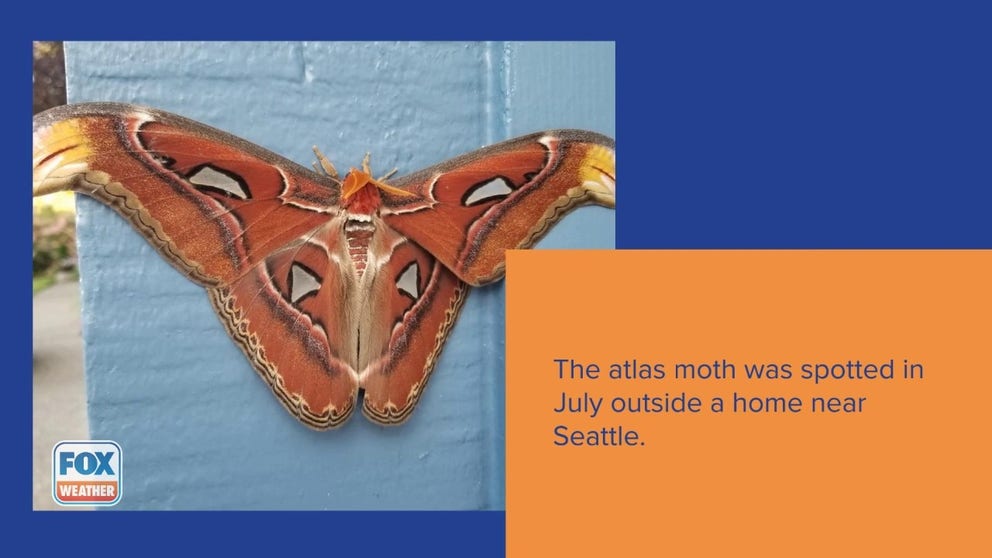Giant moth alert: ‘This is a ‘gee-whiz’ insect’
Experts say the Atlas moth is native to Southeast Asia and prefers more tropical climates
Giant moth spotted in Washington State
One of the world’s largest moths was found outside a home near Seattle
BELLEVUE, Wash. - Entomologists are asking residents in the Pacific Northwest to be on alert after one of the world’s largest moths was found outside a home near Seattle.
The sighting of the atlas moth happened in July, and authorities believe it’s the first confirmed case of the insect in the United States.
The Washington State Department of Agriculture said the giant moth has a wingspan of upwards of ten inches and is native to the tropical regions in Asia.
"This is a ‘gee-whiz’ type of insect because it is so large," Sven Spichiger, WSDA managing entomologist, said in a statement. "Even if you aren’t on the lookout for insects, this is the type that people get their phones out and take a picture of – they are that striking."

The Washington State Department of Agriculture said the giant moth has a wingspan of upwards of ten inches and is native to the tropical regions of Asia.
FLORIDA’S MARINE LIFE DEPENDS ON KILLING INVASIVE FISH
The insect is a federally quarantined pest, and entomologists say even though they are not harmful to humans when they are in caterpillar form, they can cause damage to apple and cherry trees.
It is unknown how the insect got into the country, and the WSDA said it is illegal for to obtain, harbor or sell atlas moths at any stage of their lifecycle, while in the U.S.
"This is normally a tropical moth. We are not sure it could survive here," Spichiger said. "USDA is gathering available scientific and technical information about this moth and will provide response recommendations, but in the meantime, we hope residents will help us learn if this was a one-off escapee or whether there might indeed be a population in the area."
HOW TO WATCH FOX WEATHER ON TV
Experts aren’t sure how many atlas moths could be in the Pacific Northwest, so they are urging residents to be on the lookout.
Washington State residents who spot the giant flying insect are encouraged to snap a photo and share details with pestprogram@agr.wa.gov. If not in Washington, find a state plant health director near you: Click here.

The Washington State Department of Agriculture said the giant moth has a wingspan of upwards of ten inches and is native to the tropical regions of Asia.
